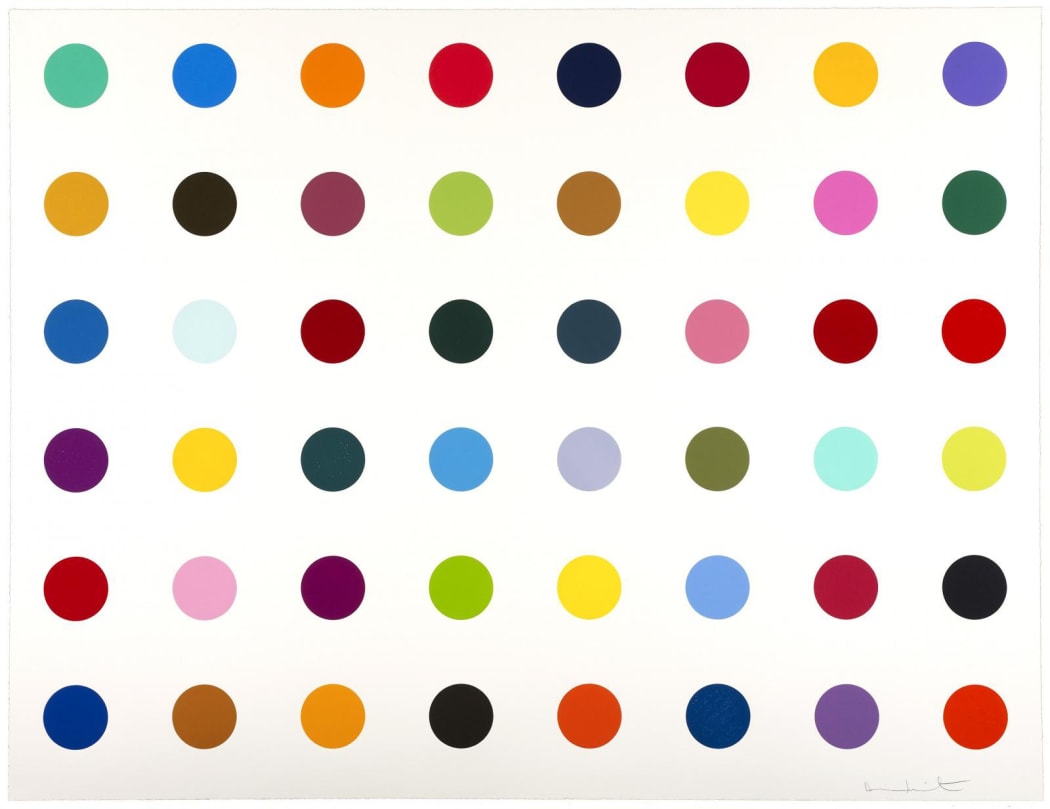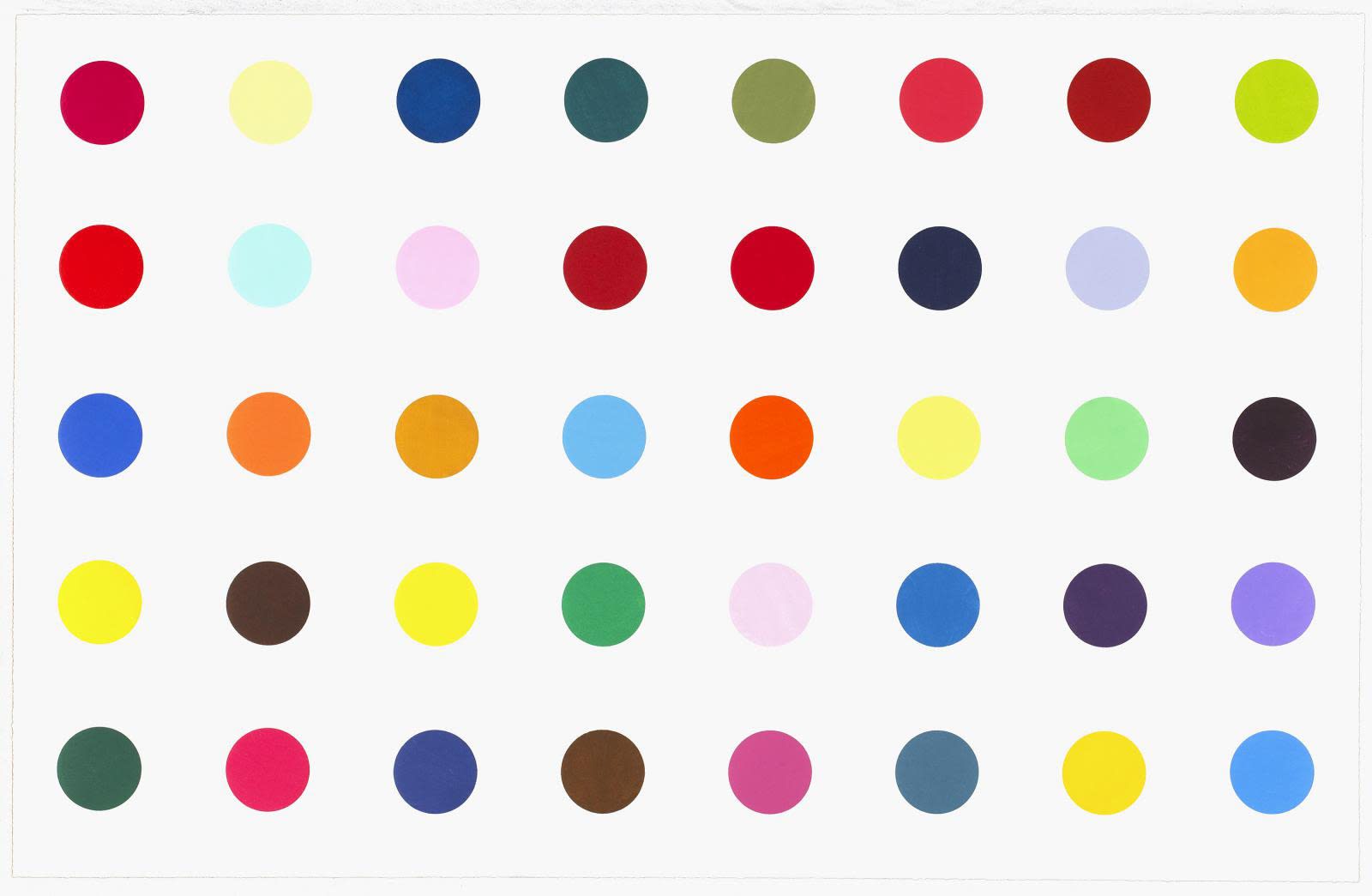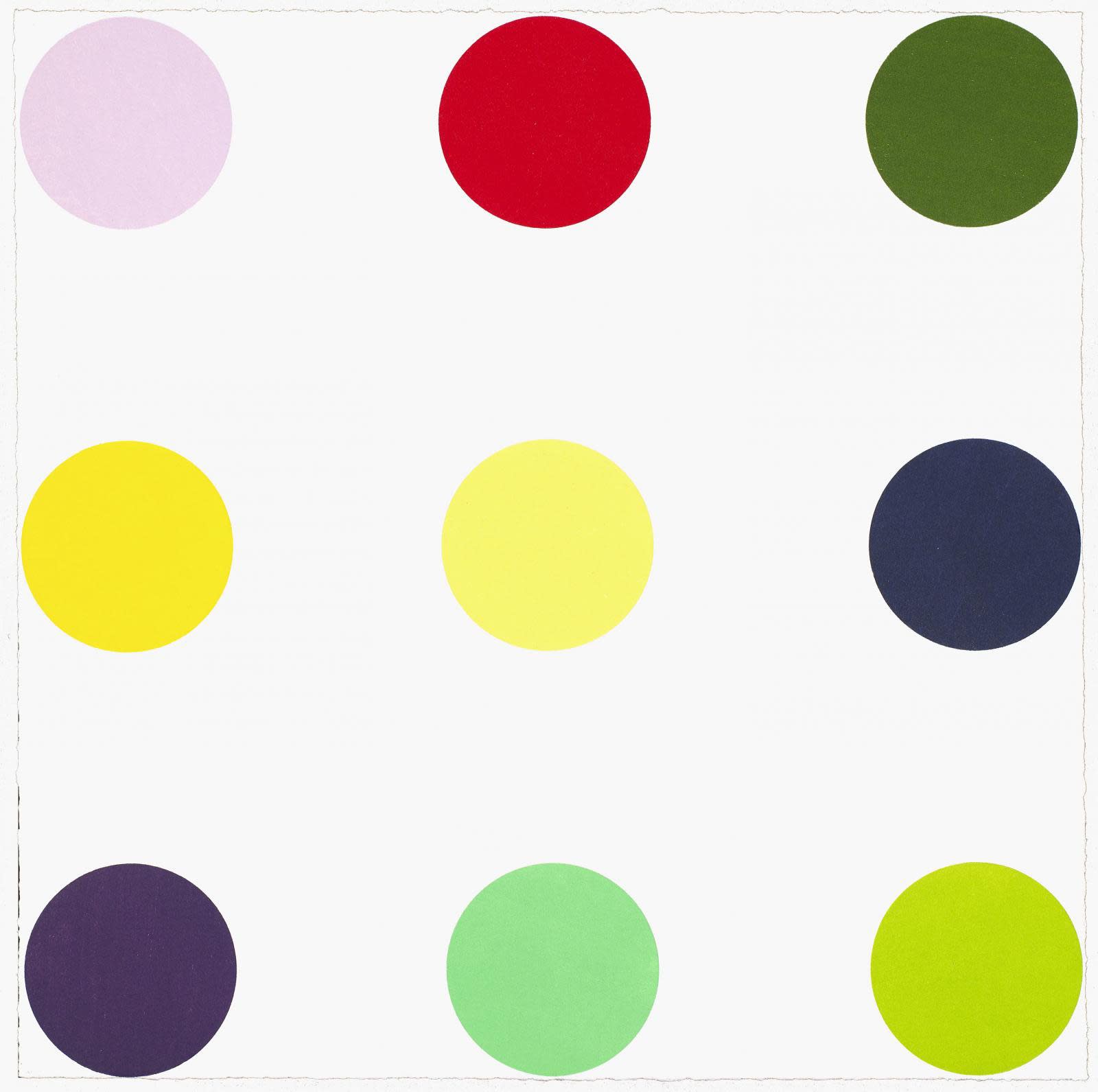
Damien Hirst – A Self-Proclaimed Colourist
A self proclaimed colourist, Hirst grew up with a deep respect for the works of abstract expressionists such as Jackson Pollock and Mark Rothko. Whilst he was developing his style, he worked with a fascination and a contempt for the coldness of contemporary minimalism that he was seeing in the Tate at the time. A celebration of colours, every single dot is a unique hue and are of a uniform size within each work, hand-painted (in paintings) each spot is a perfect circle positioned in a grid format and the space between them is equal to the size of the spot. In an interview with the artist Sophie Calle for the catalogue of his first major solo exhibition – at the ICA in London in 1991 – Hirst commented on his Spot Paintings:
“If you look at things in the real world under the microscope, you find that they are made up of cells. I sometimes imagine that the Spot Paintings are what my art looks like under the microscope. The difference between art and life is the difference between cells in the real world and the Spot Paintings… a way I can explain more directly how they relate is to think of them all as titled Isolated Elements for the Purpose of Understanding. The spots are separated from all the other spots by their boundary yet the colour takes them beyond that boundary and they communicate with each other… the way they are constructed is very uncompromising – the grid structure allows no emotion. I want them to look like they’ve been made by a person trying to paint like a machine… from this negative structure the end result is always a celebration, no matter how I feel.”

Manufactured Art and Mechanisation
Hist is fascinated by concepts of manufactured art, with art that looks like it has been created by a machine instead of a human: “the grid structure allows no emotion. I want them to look like they’ve been made by a person trying to paint like a machine"
The almost-artificial precision of his work is unsettling. Hirst plays with the ideal of mass production by creating art that is almost-satisfying instead of creating the most pleasing result possible. “If you look closely at any one of these paintings, a strange thing happens: because of the lack of repeated colours there is no harmony. We are used to picking out chords of other colours to create meaning. This can’t happen. So in every painting there is a subliminal sense of unease: the colours project so much joy it’s hard to feel it, but it’s there. The horror underlying everything. The horror that can overwhelm everything at any moment.”
12 Woodcut Spots – Prints by Damien Hirst
The 12 Woodcut Spots collection is a set of 12 prints by Damien Hirst created in 2010, each print varies between edition sizes of 24, 34 and 48. As with the spot paintings, the formulaic and crisply formed works in 12 Woodcut Spots are a celebration of precision, colour and mechanisation. Hirst explained that his goal was to create work that seemed as though it was produced ‘by a person trying to paint like a machine.’ Evoking a sense of science and medicine, the names from the 12 Woodcut Spots series were taken randomly from the chemical company Sigma-Aldrich’s catalogue ‘Biochemicals for Research and Diagnostic Reagents’ that Hirst first encountered in the early 1990s.

His first venture into painting the spots “was loose and painted with drippy paint, not minimal at all,”. Hirst hated his initial work and immediately abandoned the free-form spots for the iconic grid we know today.
This is what makes Hirst’s work art and not wrapping paper. He comments on mass production and the commodification of art by creating something that everyone loves to look at, and by destroying the concept from the inside. It’s art that has a palpable energy that affects the viewer in a very visceral way. The spot works ive up to their potent biochemical names, even if they are somewhat artificial. For more information on our Damien Hirst prints for sale, contact our team via sales@andipa.com or call +44(0)20 7589 2371 to arrange you viewing and further details.
